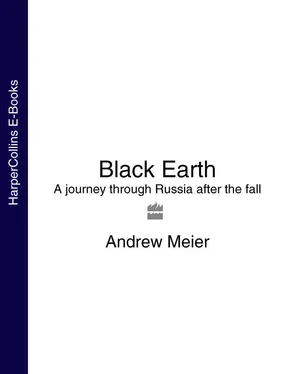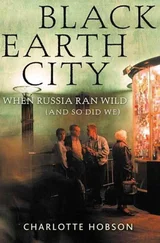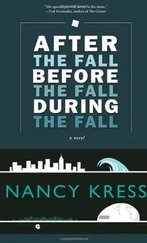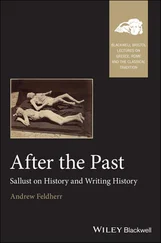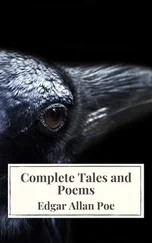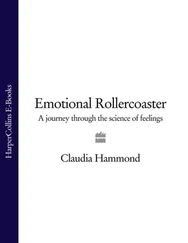One hot and humid summer morning in the final days of Yeltsin, I was sitting with such a stranger, an out-of-work air traffic controller whose dove gray face streamed with sweat. We were stuck in his 1986 Lada on a two-lane street that divides one of Moscow’s largest cemeteries. For some unknown reason, he had turned onto this street even though it was bumper to bumper with cars. For nineteen minutes we had not moved. I watched the minutes tick off on the dashboard clock. The clear plastic cover of the clock was cracked, but the hands continued to move. I had long ago missed the interview I’d set out for when I met the man sitting next to me. He seemed a bright enough fellow, this man who once guided Aeroflot jets through the Soviet skies, but he did not realize that I was a foreigner and he had no understanding of why I could be exasperated.
He had a point. In Moscow, after all, time spent frozen in place was not without its lessons – even in a traffic jam. Soon the more enterprising drivers usurped the sidewalk. Still, they did not crawl far. Two black BMWs, their windows smoked, moved toward us, negotiating for space with the little blue migalka lights on their roofs: government cars. At the same time, a Mercedes 600, the largest model the Germans ever made, eased right to make good use of the sidewalk. In the Yeltsin years of excess the Mercedes 600 had become the chariot of choice among the Moscow elite. In one year in the 1990s, more shestsoty , as the luxury cars were known in Russian, were sold in the Russian capital than in all Germany. Others of course now tried to follow the Mercedes offroad, but almost immediately one follower, an old Zhiguli two-door, hit an asphalt crater and stalled. The sound of metal on stone hinted at axle damage.
The tension grew, but everyone stayed silent. A few men swore to themselves. No one honked. After nearly an hour we still had not seen the end of the block. I was staring at the same dozen drivers and their passengers and at the rows of tombstones that ran deep amid the lean trees. At the hour mark the honking started. It was naturally without purpose or direction. A Volga to our right gave out. The poor soul in it was forced to evacuate. There was nowhere to move the car and no one willing to help its driver. Instead, a burly fellow in a Land Cruiser read him the riot act. There is nothing as pleasing, it would seem, to a Russian driver as a stream of blue swearing. The yelling did no good. The Volga was rooted in place.
We inched forward. As the second hour approached, the driver said he did not mind the wait. When he worked the tower at the airport, he’d often have to stay awake for double shifts. Sometimes there were long stretches through the night when not one plane would land. I noticed that the gas gauge of the Lada was on empty, even to the left of empty. A young girl, perhaps fifteen or sixteen, rollerbladed through the maze of metal. She was blond and wore earphones. Three cars ahead of us, in the lane to our left, sat an army truck, with an open flatbed ringed by wooden slats. It held four or five large metal barrels. At first it was not clear what the barrels contained-until I saw the pool of liquid forming beneath the truck. Then I saw the trickle dripping from one of the barrels, the one lying on its side.
“Yes,” the former air traffic controller said. It was gas. “And in a second, when some fool drops his cigarette out the window, that truck will go up like an open oil well on fire.” We went on sitting in place. I began to smell the gas. We were in the middle of five lanes of cars. We could not move anywhere. I looked left and right. On all sides drivers and passengers and passersby were smoking. I counted nine lit cigarettes.
The scene became Felliniesque in its absurdity. Another car broke down. A young woman emerged from it. She had light brown hair and was wearing a white tank top and oversize sunglasses. Two volunteers abandoned their cars to come to her rescue. At the top of the second hour a crane, unattended and parked, appeared up ahead in the right lane. Nearby stood a truck with a green canvas roof On the back of the truck a small yellow sign stenciled in black announced LYUDI (“PEOPLE”). The truck was filled with conscripts. Inside the heat of the canvas, the soldiers were sweating. They did not, as is the usual practice, extend a hand to cadge cigarettes.
We inched again. Up ahead a new obstacle, a parked trolleybus. Its power lines unstuck, it was forced from its lane by the cars that had occupied the sidewalk. At last we reached an intersection. In the sea of cars, the roads, two central arteries in the middle of the Russian capital, were unrecognizable. The traffic lights changed colors overhead, but no one paid them any heed. Only one lone Mercedes 600, big and black, tacked against traffic to the far side of the road and managed to move ahead. “A whale,” the former air traffic controller said of the Mercedes as he and I sat in silence and watched it move slowly out of sight.
AN ADVENTUROUS documentary filmmaker, a friend informed me, spent a year touring the Russian outback as the last century closed. He visited dozens of small out-of-the-way towns and villages, everywhere asking the local children the same single question: “Who was Lenin?” Somewhere in his travels a little girl in an audience far from Moscow grew excited. “I know!” she exclaimed. “Lenin was the first amphibian who came ashore. He was the one who crawled from the water, learned how to walk, climbed atop an iron tank, and called for everybody to follow him.”
DESPITE THE END OF the empire, the Seventh of November, Revolution Day, remained a holiday in Russia. In 1996, Yeltsin, having failed to bury the Party back in 1991, decided to try something different. He gave it a new name, the Day of Accord and Reconciliation. Like most of Yeltsin’s grand gestures, the rechristening was a failure. Sergei Kovalyov, the Duma deputy who spent ten years in the Gulag and served as Andrei Sakharov’s closest protégé after Gorbachev freed the physicist from his internal exile in Gorky, called it yet another foolhardy try at a top-down purification of the nation, the state’s attempt to relegate the old way of life to history.
“What does this mean, ‘Accord and Reconciliation’?” Kovalyov asked me one afternoon in his cramped Duma office. “These are empty words when people still carry Stalin portraits in parades. A day of national mourning would be a bit more appropriate. We don’t need a new holiday. We need to teach our children that Lenin and Stalin were the progenitors of a criminal regime, that they were mass murderers.”
Kovalyov, a shy, soft-spoken man who wore the same thick Soviet-style glasses as when I met him a decade earlier, was the first to say he had never wielded the clout of Sakharov. But amid the din of the Duma his voice resounded with moral sobriety. He shared a story that had stunned him. A student had come to see him. At one point in their conversation Kovalyov mentioned the passing of the writer Andrei Sinyavsky, once best known in the West by his pseudonym, Abram Tertz, who, along with another young Soviet writer, Yuli Daniel, was arrested in 1966 and imprisoned for publishing abroad. 9As Kovalyov recounted for the student the saga of the Sinyavsky and Daniel trial that attracted worldwide outcry, the student had laughed. “How can you laugh at a writer who was arrested?” Kovalyov had asked him. The student said he’d imagined the story was a joke. “He just couldn’t believe,” Kovalyov said, “it was ever possible to be sent to jail for writing literature!”
Five years after Yeltsin renamed November 7, a poll in 2001 found 43 percent of those queried yearned for the return of Revolution Day. Another pollster asked: “Imagine that the October Revolution is happening before your eyes. What would you do?” Of the respondents, 22 percent said they would support the Bolsheviks; 19 percent said they would cooperate with them in part; 13 percent said they would leave the country. Just 6 percent said they would fight Lenin and company. 10
Читать дальше
